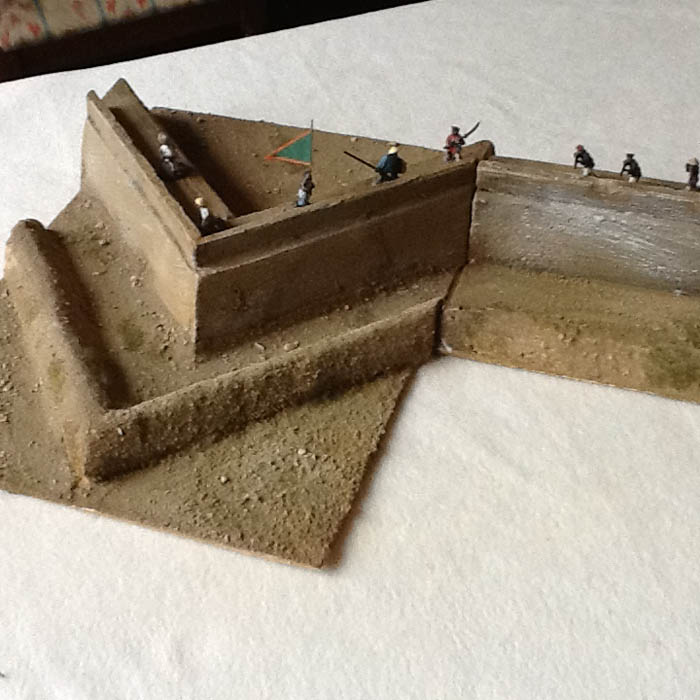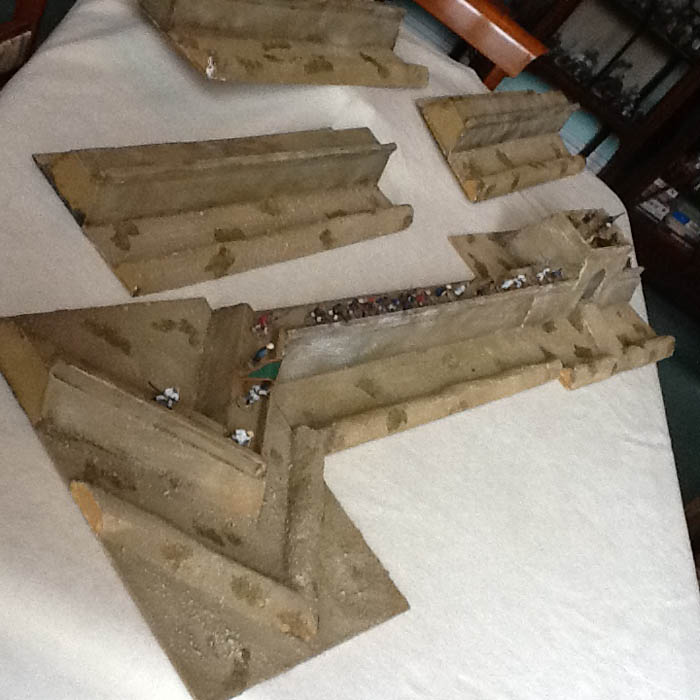Conrad Cairns
Since the start of 2018 some of us have been dusting off (literally) and restoring pieces of DWG terrain which have been damaged over the years. While looking for such items, we discovered two fortifications which have not been used in living memory, but which are now ready for use (although a bit delicate, due to the original methods of construction).

The first is a 15mm field fortification, pierced for 3 guns, and suitable for many wars in the eighteenth and nineteenth centuries-the methods of construction of these things were still being taught in the 1892 British manual of engineering, although the shape was by then rather outdated. It is photographed with British and HEIC trooops of the 1840s.









The bigger piece is a set of six items to make a straight wall about ten feet long, in 25-30mm scale, comprising four plain sections, a gate, and a triangular bastion. Exactly what it was designed as is not clear, but it seems most likely to be east Asian. The Chinese have been using rammed earth for city walls since the Shang (c. 1520-1030 BC), and this seems to be the construction method. Our model seems to lack any brick facing.
Very likely it could also be found in areas of Chines influence, such as Korea and Vietnam. The gate is particularly Chinese in overall appearance, and could be topped with a decorative roofed superstructure by a very talented modeler. The bastion is a puzzle as most Chinese works seem to been square, not pointed. It might be best to use it as a backdrop to a display game, along the edge of a table-or build the large array of east Asian devices employed in the attack and defence of places. Russia also had thick earth walls, but these seem to have used more wooden elements, such as parapets.
